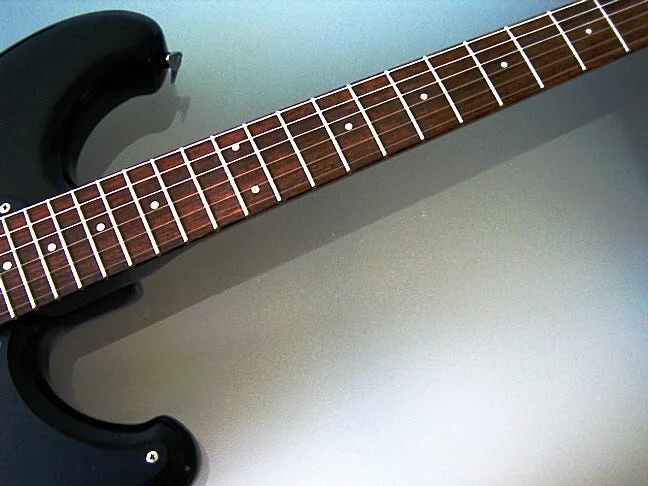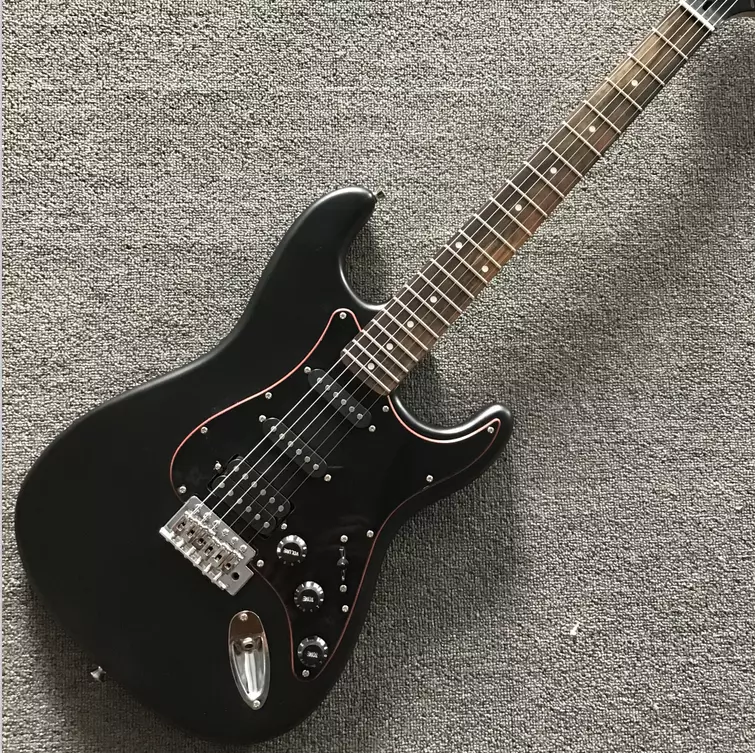Have you ever looked at a guitar fretboard and wondered what those little dots were for? Or perhaps you’re a beginner guitarist trying to figure out how to navigate the fretboard? Don’t worry, I’ve been there too. As someone who has been playing guitar for years, I can confidently say that I have a deep understanding of those seemingly insignificant dots.
In this article, we’ll delve into everything you need to know about the dots on a guitar fretboard. From their purpose and significance, to how they can help with your playing, we’ll cover it all. Whether you’re just starting out or looking to expand your knowledge as an experienced player, this article is for you. So let’s get ready to connect the “dots” and unlock the secrets of the guitar fretboard!
So, what are the dots on a guitar fretboard?
The dots on a guitar fretboard serve as visual markers to help musicians easily navigate their instrument. They are typically found on the top of the neck, with larger or differently shaped ones at certain intervals such as the 3rd, 5th, 7th, and so on. These dots are crucial for beginners learning how to play chords and scales, as well as for more experienced players who need quick reference points during performances.
In addition to aiding in navigation, these dots also have specific purposes depending on their placement. For example, the dot at the 12th fret indicates that you have reached an octave higher from where you started. This is important for understanding musical theory and creating harmonies.
Some guitars may also have additional dots along the side of the fretboard facing towards the player. These can be helpful when playing in low light situations or if you prefer looking down at your fingers while playing.
Overall, these small but significant markings play a big role in making guitar playing more accessible and efficient. So next time you pick up a guitar, take note of those little dots – they just might make all the difference!
Understanding the Purpose of Dots on a Guitar Fretboard
When you look at a guitar fretboard, you’ll notice those small dots inlaid along the neck. These dots are actually really important for guitarists. They serve as visual markers to help players know where they are on the fretboard without having to constantly look down or count frets during a performance. Typically, these dots appear at frets 3, 5, 7, 9, and 12 (sometimes even beyond). The one at the twelfth fret is especially crucial because it marks an octave above the open string.
Imagine you’re in a dark room trying to navigate—those little reflective strips on stairs become lifesavers. Similarly, these dot markers offer guidance when moving up and down the neck of your instrument. They make it easier to jump from one chord or note to another with confidence and speed. This is particularly useful for beginners who might still be getting used to finger placement but also aids seasoned musicians playing fast solos or intricate pieces that require swift shifts across various positions.
In essence:
- The dots act like signposts.
- They help maintain accuracy.
- They assist both novice and experienced players alike.
So next time you pick up a guitar and see those tiny circles embedded in wood or plastic, remember they’re there not just for decoration—they’re practical tools designed specifically for ease of playability.
Breaking Down the Positioning of Dots on a Fretboard
When you first pick up a guitar, the evenly spaced dots on its fretboard might seem like just decoration. But these markers hold the key to navigating your way up and down the neck with ease. Typically, you’ll find dots positioned at frets 3, 5, 7, 9, and 12—these are strategically placed to help players quickly locate notes and chords without having to look too closely. At the twelfth fret especially important: it’s where you hit an octave of any open string.
Understanding this layout can transform how you play music. It serves as a quick reference guide when you’re learning scales or improvising solos. Imagine you’re playing in G major; knowing that there’s a dot at the fifth fret makes it easier to remember that’s an A note on the low E string. The placement becomes second nature over time, letting your fingers dance across strings with confidence.
- The third fret marker denotes pivotal chord shapes.
- Fret five is crucial for power chords and blues scales.
- The seventh fret aids in forming barre chords seamlessly.
So next time you practice, take a moment to appreciate those unassuming little dots—they’re more than ornamental; they map out your musical journey.
Read also: Is Yamaha F310 a full size guitar?
How to Use Fretboard Dots to Improve Your Playing Skills
When you first pick up a guitar, the fretboard can look like an endless road with no clear direction. But those little dots on the neck of your instrument? They’re more than just decoration; they’re signposts that can help guide your musical journey. Understanding and utilizing these markers will improve not only your navigation but also your playing skills. The dot at the 3rd fret is where many players start to feel comfortable—it’s often where you’ll find a G note on most guitars in standard tuning. Think of it as a trusty landmark that helps you get back on track when you’re exploring new musical territories.
The dots also serve wonderfully for quick visual references during performances or practice sessions. For instance:
- The 5th-fret dot indicates A, which is pivotal for various scales and chords.
- The 7th-fret marker signals B, crucial for soloing in many genres.
- Your octave point at the 12th fret doubles everything down below, creating symmetry across the neck.
By consistently using these dots while practicing scales or learning new songs, they become second nature—a mental map that’s always there to assist you without thinking twice about it. From slides and bends to intricate solos, incorporating this simple yet effective technique will vastly enhance both speed and accuracy over time.

The History and Evolution of Dot Markings on Guitars
Guitars have long been adorned with dot markings, these small yet significant markers offering more than just aesthetic appeal. Initially, they served the practical purpose of orienting players along the fretboard, ensuring fingers hit all the right notes even in dim light or fast-paced performances. As early as the 19th century, guitars featured dots on their necks—typically at frets three, five, seven, nine, and twelve. These simple indicators were lifesavers for musicians transitioning between complex chords and scales.
Over time, these humble dots evolved into symbols of craftsmanship and style. Guitar makers began experimenting with materials like mother-of-pearl and abalone to make them not just functional but visually stunning too. Iconic guitar brands such as Fender and Gibson took this a step further by introducing unique inlay patterns that became their signatures. Today’s players can find an array of designs from classic dots to intricate shapes like birds or vines winding up the fretboard. Modern technology has even brought us LED-illuminated markers for those electrifying stage performances where visibility is key.
In essence:
- The roots lie in simplicity.
- The progression shows artistic flair.
- The future blends tradition with innovation.
All thanks to those little dots guiding both novice strummers and seasoned shredders alike through musical landscapes vast and varied.
You may also like: steinway model b price
Summarizing the Importance of Understanding Guitar Fretboard Dots
Understanding the dots on a guitar fretboard is like having a secret map. These little dots, usually found on frets 3, 5, 7, 9, and 12, guide you through the musical landscape of your instrument. Think of them as street signs that help you navigate without getting lost. By knowing their positions well, shifting between chords or scales becomes second nature. This familiarity boosts your confidence and allows for smoother transitions during play.
Moreover, these markers are not just decorative; they’re functional too. When jamming with friends or performing solo pieces, quickly locating notes and forming complex chords can make all the difference in how seamless and enjoyable your music sounds. The twelfth fret dot is especially crucial since it marks an octave above the open string’s pitch—think of it as reaching home base in baseball after rounding all bases successfully! So next time you pick up your guitar, pay extra attention to those little helpers. They’re more than mere decorations—they’re essential tools for every guitarist aiming to improve their skills bit by bit.
- Fret markers aid navigation.
- They assist in quick note identification.
- The twelfth fret dot signifies an octave.
Embrace these dots; let them lead you toward becoming a more adept musician!

